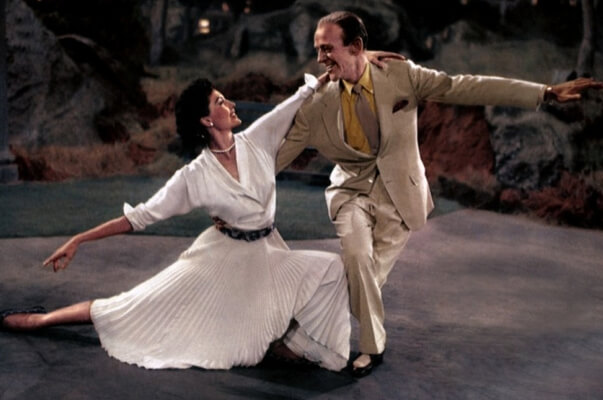Jordan Peele’s directorial debut, “Get Out,” is one of the most acclaimed American films of this decade. Needless to say, his second film “Us” arrives in theaters with a lot of baggage, particularly because the reception of “Get Out” felt like a political event as much as a cultural one. Coming one month after Trump’s inauguration, the massive commercial success of “Get Out” felt like a widespread acknowledgement of the persistence of white supremacy under new and more subtle guises. “Us” moves in a new direction, simultaneously artier and closer to conventional genre fare.
The film starts out in 1986. A young girl named Adelaide goes to a beach in Santa Cruz with her family. The excursion turns creepy. Heading into a mirrored funhouse, she sees her doppelganger. “Us” then takes us to the present, where the adult Adelaide (Lupita Nyong’o), her husband Gabe (Winston Duke) and their children Zora (Shahadi Wright Joseph) and Jason (Evan Alex) are driving to their summer house for a vacation. Their expectations of relaxation are shattered by a power outage and, an instant later, the arrival of four strangers who look exactly like them but are dressed in clothes that resemble prison jumpsuits. The doppelgangers, who call themselves “the Tethered,” force their way into the house, and seem to be staging an assault on the entire town. The family fights back.
In some respects, the symbolism here is extremely heavy-handed. As a child in 1986, Adelaide visits a funhouse called Shaman’s Vision Quest. In the opening scene, a Hands Across America commercial plays on a TV set. However, “Us” weaponizes ‘80s nostalgia and iconography in a way that’s closer to the micro-budget underground films of Damon Packard than last year’s “Transformers” spin-off “Bumblebee.” References to Michael Jackson and, less explicitly, Freddie Kruger bring up the grim underside of the decade.
Anyone expecting an overtly political allegory from “Us” may be disappointed, though the film has something to say about class. But even though Red (Adelaide’s doppelganger, also played by Nyongo’o) spells out her life story, Peele’s script doesn’t connect all its dots the way “Get Out” did. It’s as concerned with psychology as politics, tying the two together. I could run down a list of interpretations for the film, but the final half hour takes Adelaide and Red back to the funhouse for a reckoning with the ways Adelaide’s success in the world has come at Red’s expense. Their trip into its basement, which fleshes out some of the film’s narrative, feels like a descent into Hell. Nyong’o expertly acts against herself, convincingly playing both characters.
Peele knows how to make a straightforward horror film. The middle section of “Us” uses jump scares and sudden stabs of music. But it’s closer to Michael Haneke’s “Funny Games” — without the lectures to the audience — than “Jaws,” despite the T-shirt Jason wears, in its depiction of a family being terrorized with no idea what’s going on and its use of specific objects like golf clubs. Unlike Haneke, Peele is willing to give his audience pleasure, including satisfaction in violence. However, “Us” delights in its elliptical storytelling. It reminds me of the “args” — alternate reality games — that YouTubers construct out of fake found footage hinting at apocalyptic futures and vague but world-changing conspiracies.
The potency of the film’s allegory doesn’t stem so much from what it says as how it does so. Its camera movements are frequently elegant and graceful, but the editing is so quick that it’s clear “Us” was designed for multiple viewings. Peele showed his knack for combining images and music with his use of Childish Gambino’s paranoid ballad “Redbone” in “Get Out.” Here, Michael Abels’ score incorporates textures as different as a children’s choir, swooping strings inspired by Bernard Herrmann’s Hitchcock soundtracks, and African percussion. N.W.A.’s “Fuck Tha Police” is placed into a new context but retains its point as the accompaniment to two African-American children fighting for their lives against murderous doppelgangers of their parents’ white friends. Dance is also deployed to show Adelaide’s rise to middle-class privilege and Red’s deliberately designed fall.
Turning in a review shortly after seeing “Us” once isn’t the best way to write seriously about it, but that’s what critics, including myself, had to do. The 280-character hot takes that will eat up space on Twitter this weekend will be worse. Peele shows his strength at world-building here. “Us” suggests middle-class life is built upon severe pain and hints that a violent return of the oppressed may be on the way. But that way of looking at it doesn’t exhaust its mystery. The film suggests that the uncanny and the unconscious are essential to any real examination of the rot in America.
US | Directed by Jordan Peele | Universal Pictures | Opens citywide Mar. 22
































